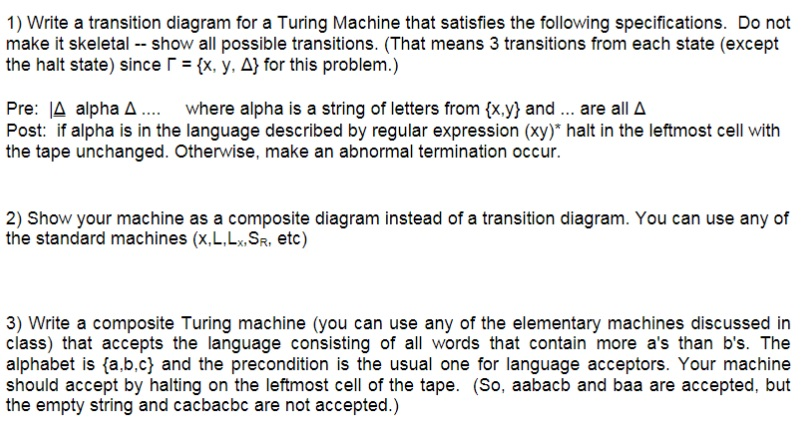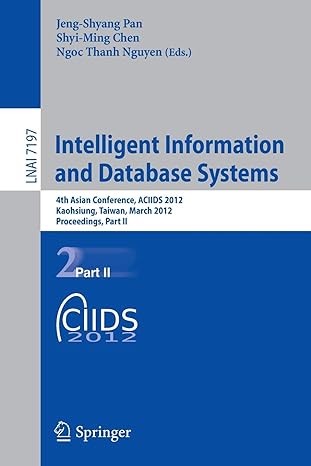Answered step by step
Verified Expert Solution
Question
1 Approved Answer
In Java, I believe Question 1 and 2 are related. 1) Write a transition diagram for a Turing Machine that satisfies the following specifications. Do

In Java, I believe Question 1 and 2 are related.
1) Write a transition diagram for a Turing Machine that satisfies the following specifications. Do not make it skeletal -- Show all possible transitions. (That means 3 transitions from each state (except the halt state) since = {x, y, A} for this problem.) Pre: A alpha A.... where alpha is a string of letters from {x,y} and ... are all A Post: if alpha is in the language described by regular expression (xy)* halt in the leftmost cell with the tape unchanged. Otherwise, make an abnormal termination occur. 2) Show your machine as a composite diagram instead of a transition diagram. You can use any of the standard machines (x,L, LX, SR, etc) 3) Write a composite Turing machine (you can use any of the elementary machines discussed in class) that accepts the language consisting of all words that contain more a's than b's. The alphabet is {a,bc} and the precondition is the usual one for language acceptors. Your machine should accept by halting on the leftmost cell of the tape. (So, aabacb and baa are accepted, but the empty string and cacbacbc are not accepted.) 1) Write a transition diagram for a Turing Machine that satisfies the following specifications. Do not make it skeletal -- Show all possible transitions. (That means 3 transitions from each state (except the halt state) since = {x, y, A} for this problem.) Pre: A alpha A.... where alpha is a string of letters from {x,y} and ... are all A Post: if alpha is in the language described by regular expression (xy)* halt in the leftmost cell with the tape unchanged. Otherwise, make an abnormal termination occur. 2) Show your machine as a composite diagram instead of a transition diagram. You can use any of the standard machines (x,L, LX, SR, etc) 3) Write a composite Turing machine (you can use any of the elementary machines discussed in class) that accepts the language consisting of all words that contain more a's than b's. The alphabet is {a,bc} and the precondition is the usual one for language acceptors. Your machine should accept by halting on the leftmost cell of the tape. (So, aabacb and baa are accepted, but the empty string and cacbacbc are not accepted.)Step by Step Solution
There are 3 Steps involved in it
Step: 1

Get Instant Access to Expert-Tailored Solutions
See step-by-step solutions with expert insights and AI powered tools for academic success
Step: 2

Step: 3

Ace Your Homework with AI
Get the answers you need in no time with our AI-driven, step-by-step assistance
Get Started


